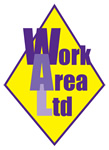If you have to store acids and other hazardous materials, remember you must comply with the Control of Substances Hazardous to Health Regulations 2002 (CoSHH). You’ll also find the Health and Safety Executive (HSE) makes practical recommendations based on the CoSHH rules.
As a supplier of acid storage cabinets, we are often asked for practical advice on safe storage, so here are some of our top tips.
Storage of containers and acid bottles
Don’t overload your acid storage cabinets. Ensure containers are standing upright, not lying on their sides.
Remember, some acids react badly with others. Check each acid’s safety data sheet. Don’t store incompatible acids in the same cabinet. If necessary, you should have more than one cabinet.
Where to site your acid storage cabinets
Acid storage cabinets should be kept in a well-ventilations room. Place your cabinets away from direct sources of heat, including sunlight. Heat may cause unstable reactions among the acids.
Take care to ensure you and the emergency services can easily access to the cabinets.
General dos and don’ts of acid storage
Always ensure the labels on your acid containers face outwards. You should be able to see what you have in your cabinet without moving the containers.
Put heavy bottles of acid on the lower shelves of your storage cabinets. Lighter containers should go at the top.
Do not use your acid cabinets to store other hazardous materials. All hazardous material cabinets and bins are colour-coded to help identify the contents at a glance, so it’s important you store the right hazardous substances in the right cabinets.
If you have a stack of hazardous material cabinets, always put the acid cabinet at the bottom.
Keep the keys to your acid storage cabinet in a safe place, ideally in a secure key safe. Make sure they can be quickly and easily retrieved in case of emergency.
Above all, make sure your acids are stored safely in a dedicated acid storage cabinet – lives may depend on it.

